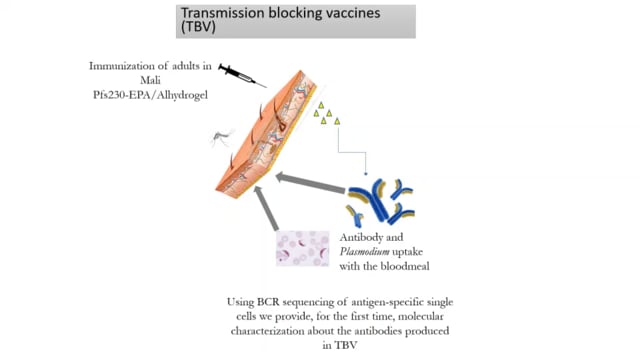ASTMH 2018, Camila H Coelho: “The first human monoclonal antibody against the sexual stage Plasmodium falciparum antigen Pfs230”
Collaborator(s): National Institute of Allergy and Infectious Diseases (NIAID), National Institutes of Health (NIH), United States
Countries: United States
Published: 31/10/2018
In collaboration with the poster presenters, MESA brings you this sneak-peak of poster 1857 from the 67th ASTMH annual meeting in New Orleans, October-November 2018
Title: “The first human monoclonal antibody against the sexual stage Plasmodium falciparum antigen Pfs230”
Speaker: Camila H Coelho, National Institute of Allergy and Infectious Diseases (NIAID), NIH
Abstract:
Malaria transmission-blocking vaccines (TBVs) induce antibodies against proteins expressed by the parasite in the mosquito midgut and are an innovative approach to reduce parasite transmission and contribute to malaria elimination. Antibodies against Pfs230, a protein on the surface of Plasmodium falciparum gametes, can block parasite transmission, and Pfs230 vaccine candidates are currently in clinical trials. Antibody repertoire analyses, performed by B cell receptor (BCR) sequencing, have been employed to evaluate responses to other vaccines and to identify sequences of neutralizing antibodies. Here, we used a Pfs230 tetramer to sort Pfs230-specific single B cells (CD3-, CD19+, CD20+, CD27+, Pfs230+) generated after a fourth dose of Pfs230-EPA/Alhydrogel® in Malian adults. We sequenced light and heavy chain of antibody from these cells and identified paired-VDJ-receptors from antigen-specific B cells from nine vaccinees. The resulting sequences indicated expansion of clonotypes IGHV1-69 (heavy chain) in 8 subjects and IGKV4-1 (light chain) in 7 subjects. Further alignment of the heavy chain IGHV1-69 clonotypes to IMGT germline sequence showed at least ten mutations per sequence in CDR1 and CDR2 regions, demonstrating high proliferation and selection in response to the vaccine. We developed and applied a method to rapidly generate Fab fragments by cell free expression; individual BCR of interest were identified based on repeated frequency on the plate, again suggesting clonal selection. Five paired heavy and light chains were PCR amplified from selected wells. Using overlap extension PCR, all necessary elements for in vitro transcription and translation and either the CH1 or C-kappa-domain were added to both the 5’ and 3’ ends of the single cell VDJ. After in vitro transcription and translation, four out of five tested Fab fragments demonstrated binding through a colorimetric ELISA assay. These results will be fundamental for design and improvement of TBV strategies to induce potent antibody responses against mosquito stage parasites.
public://2018-11/Camila – Abstract.pdf
1
THEMES: Immunology



